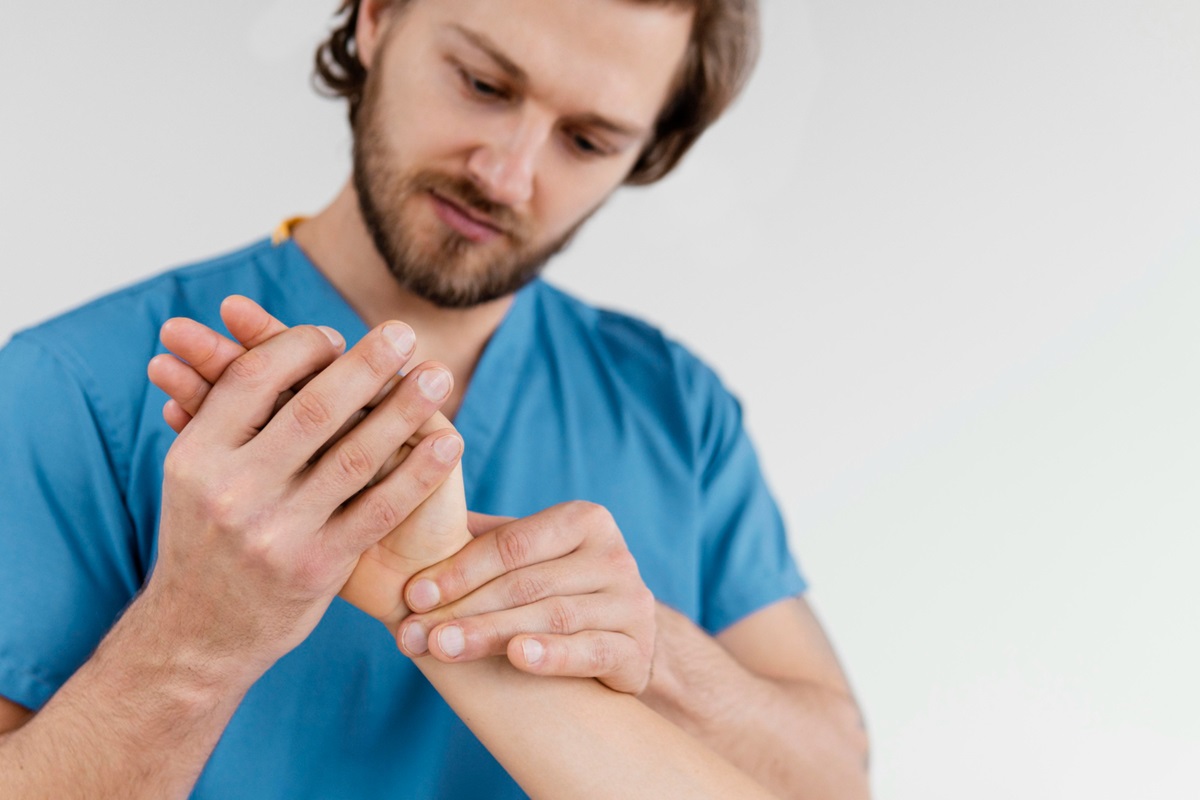Introduction
Carpal tunnel syndrome can significantly impact your daily life, causing pain, numbness, and weakness in your hands and wrists. If you’re seeking non-invasive, effective solutions, physical therapy might be the answer. In this comprehensive guide, we will explore how physical therapy can play a crucial role in alleviating carpal tunnel syndrome, helping you regain functionality and live pain-free. Let’s delve into the world of physical therapy and its potential to provide relief for this common condition.
Understanding Carpal Tunnel Syndrome
1. Anatomy of the Carpal Tunnel:
- Explain the structure of the carpal tunnel—a narrow passageway in the wrist that houses the median nerve. Discuss how compression or irritation of this nerve leads to carpal tunnel syndrome symptoms.
2. Common Causes and Symptoms:
- Explore the various causes of carpal tunnel syndrome, including repetitive hand and wrist movements, arthritis, and hormonal imbalances. Describe the symptoms, such as tingling, numbness, and weakness in the hands and fingers.

The Role of Physical Therapy in Carpal Tunnel Syndrome
1. Comprehensive Assessment:
- Highlight how physical therapists conduct thorough evaluations to identify the underlying causes of carpal tunnel syndrome. Discuss the importance of understanding each patient’s unique condition for tailored treatment plans.
2. Non-Invasive Techniques:
- Introduce non-invasive physical therapy techniques, including exercises, stretches, and manual therapy. Explain how these methods aim to reduce inflammation, improve wrist mobility, and strengthen the surrounding muscles, alleviating pressure on the median nerve.
Physical Therapy Interventions for Carpal Tunnel Relief
1. Customized Exercise Programs:
- Discuss how physical therapists design personalized exercise routines focusing on wrist flexibility, hand strength, and nerve gliding exercises. These exercises promote better circulation and reduce pressure on the median nerve.
2. Manual Therapy Techniques:
- Explain how manual therapy, including soft tissue mobilization and joint mobilization, can alleviate muscle tension, reduce inflammation, and improve wrist mobility. Describe the hands-on techniques used by physical therapists for targeted relief.
3. Ergonomic Assessments:
- Emphasize the importance of ergonomics in managing carpal tunnel syndrome. Physical therapists assess workplace setups and recommend adjustments to minimize strain on the wrists, improving overall comfort and reducing symptoms.
Self-Care Strategies and Home Exercises
1. Home Exercise Programs:
- Provide examples of simple yet effective exercises and stretches that individuals can perform at home. Emphasize the importance of consistency and proper technique in maximizing the benefits of these exercises.
2. Wrist Splints and Braces:
- Discuss the role of wrist splints and braces in supporting the wrist in a neutral position, relieving pressure on the median nerve during sleep and activities. Explain when and how to use these devices for optimal results.

Collaborative Approach to Healing
1. Patient Education:
- Stress the importance of educating patients about their condition, including triggers, symptom management, and prevention strategies. Informed patients are more likely to actively participate in their recovery.
2. Regular Follow-ups and Adjustments:
- Describe the collaborative nature of physical therapy, where regular follow-up appointments allow therapists to assess progress, modify exercises, and ensure the ongoing effectiveness of the treatment plan.
Conclusion – A Path to Pain-Free Living
Empowering You for a Pain-Free Tomorrow
Physical therapy offers a non-invasive, holistic approach to managing carpal tunnel syndrome. By addressing the root causes, improving wrist mobility, and empowering patients with self-care strategies, physical therapists play a vital role in the journey toward pain-free living. If you’re ready to take the first step toward relief and improved hand function, don’t hesitate to schedule a consultation with us today. Let us be your partners in your journey to lasting comfort and a future of pain-free movement.
Contact us now to schedule your consultation and take the first step toward a pain-free, more active life.
OrMobility Physical Therapy & Performance


